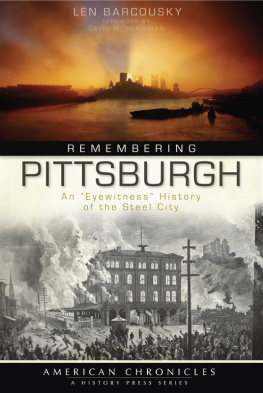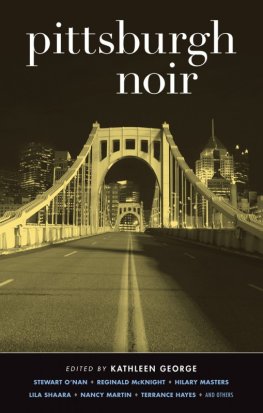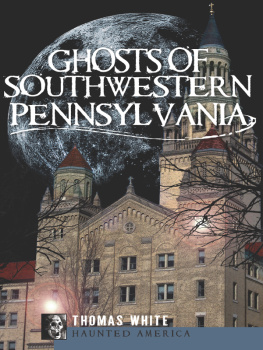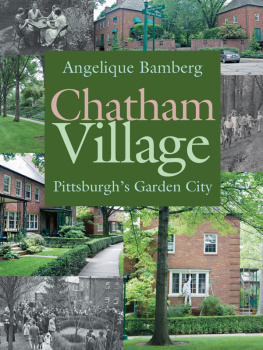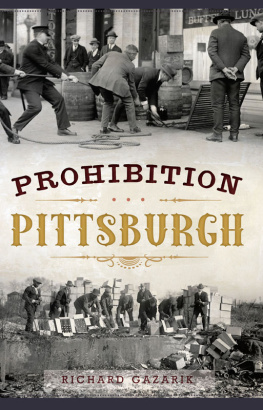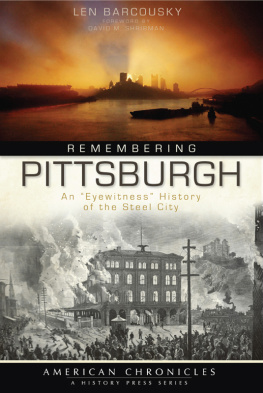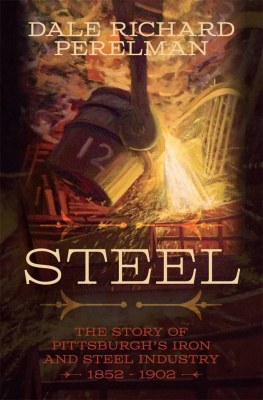
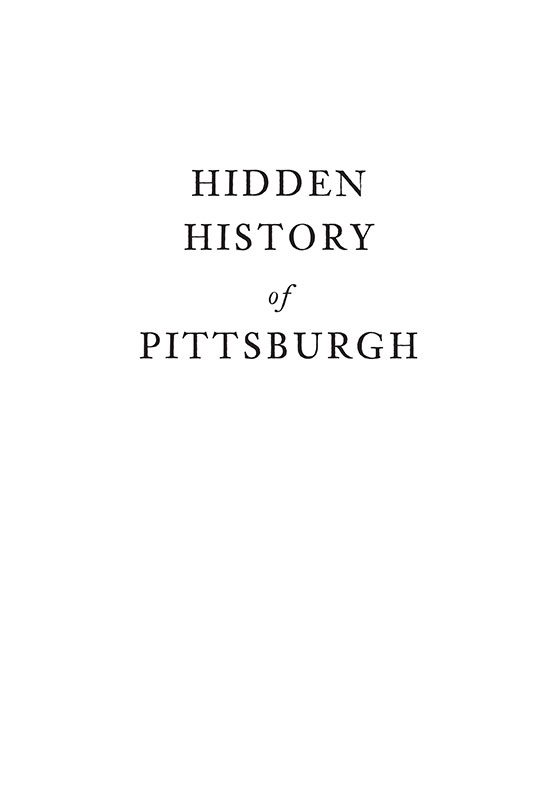

Published by The History Press
Charleston, SC
www.historypress.net
Copyright 2016 by Len Barcousky
All rights reserved
First published 2016
e-book edition 2016
ISBN 978.1.43965.620.4
Library of Congress Control Number: 2016932977
print edition ISBN 978.1.46713.589.4
Notice: The information in this book is true and complete to the best of our knowledge. It is offered without guarantee on the part of the author or The History Press. The author and The History Press disclaim all liability in connection with the use of this book.
All rights reserved. No part of this book may be reproduced or transmitted in any form whatsoever without prior written permission from the publisher except in the case of brief quotations embodied in critical articles and reviews.
In memory of my mother, Nora Muskelavage Barcousky.
CONTENTS
Preface
PULLING BACK THE CURTAIN ON HISTORY
News from the dedication of the new national cemetery at Gettysburg was surprisingly late reaching Pittsburgh in 1863. This famous little town is overflowing with people, the Daily Pittsburgh Gazette reported on November 20, 1863, in a skimpy two-sentence story the day after the ceremonies. Special trains have brought thousands, and other thousands have come in from the surrounding country.
Why so brief a dispatch when the Gazette had sent its own reporter to the event? After all, by 1863 telegraph operators could send breaking news across the nation in a matter of minutes after events occurred. The cemetery dedication had ended by 2:30 p.m. on November 19. That should have offered plenty of time to get a story in the next mornings editions.
The Gazettes on-the-scene correspondent, identified only by the initial H, offered an explanation the next day. It is difficult for a Western reporter to get justice at the East, he wrote in the Gazette on November 21. Reporters from the big eastern papers have the [telegraph] operators under their heels, and I have reason to believe that 10,000 words were crowded in ahead of my dispatch last night, driving me off at a late hour to a distant point to get anything off before two oclock a.m., he complained. H had to hop aboard a train and send his report from Conemaugh, outside Johnstown, Pennsylvania. By the time he got there, it was much too late for his copy to make the morning newspaper.
I can identify. For more than forty years I have struggled with damaged payphones, sometimes surly news clerks, balky fax machines, slow photo transmitters, cranky laptop computers, bad phone connections and spotty Internet service in efforts to file remotely on deadline. Maybe that is the reason I have enjoyed writing so many stories about Pittsburghs past. Most of them have been researched in the quiet of the Carnegie Library of Pittsburgh. While I still faced deadlines in completing those brief looks into the regions past, my reports most often were sent with the touch of a button from one in-office computer to another.
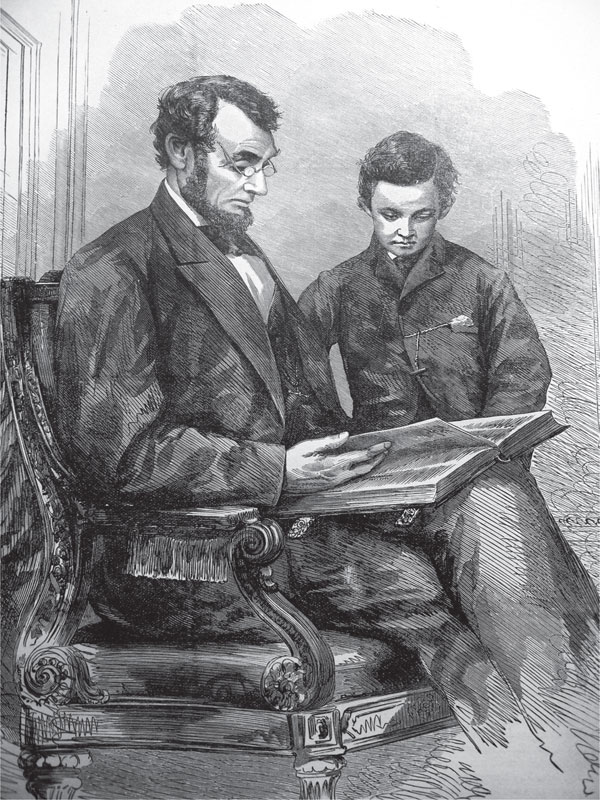
This print of Abraham Lincoln and his son was based on a photo made at Mathew Bradys studio in February 1864. A popular portrait of the president, it shows him wearing glasses. From Harpers Pictorial History of the Civil War, Part Second. Courtesy Senator John Heinz History Center.
The primary source for these hidden gems has been the Pittsburgh Post-Gazette archives. Dating back to 1786, these old newspapers reflect 230 years of both daily living and historic changes in southwestern Pennsylvania. Those reports have brought me closer to my ink-stained predecessorsalmost always anonymousas they and I have struggled to make sense of the region and the world.
Much of what I have found has held up well. The Pittsburgh Gazette and its successor publications have been on the right side of history in support of causes that have included abolition, national union and civil rights. Stories about religion, science and the arts have had pride of place. Whenever a famous musician, writer or politician came to town over the past two centuries, reporters from the Post-Gazette and other local newspapers were there to interview and review. At times of national tragedy, such as the sinking of the Lusitania in 1915, Post-Gazette writers have found local angles to bring the story home to readers.
Their reports have not so much dealt with hidden history, but rather history that always is at risk of being forgotten. And that would be too bad. Most news stories, especially in the age of the Internet, have the lifespan of a mayfly. Almost all of the nineteenth- and twentieth-century stories on which this book is based were reported, written and printed in a day. These Hidden History tales, nevertheless, deserve another look. They show how ordinary and extraordinary people have responded to challenge. They include new anecdotes that reveal the character of historic figures. They show us what life was like here during war and peace.
I have long been telling a silly story about a newsboy peddling papers years ago at the corner of Grant Street and Liberty Avenue in downtown Pittsburgh. He was yelling, Read all about it. Fifty people swindled! Fifty people swindled!
Curious, a man walked over and bought a paper. He checked the front page and then looked through the rest of the paper. Finding nothing about a swindle, the man walked over to the newsboy and complained, Theres nothing in here about fifty people being swindled. The newsboy ignored him and started calling out, Read all about it. Fifty-one people swindled!
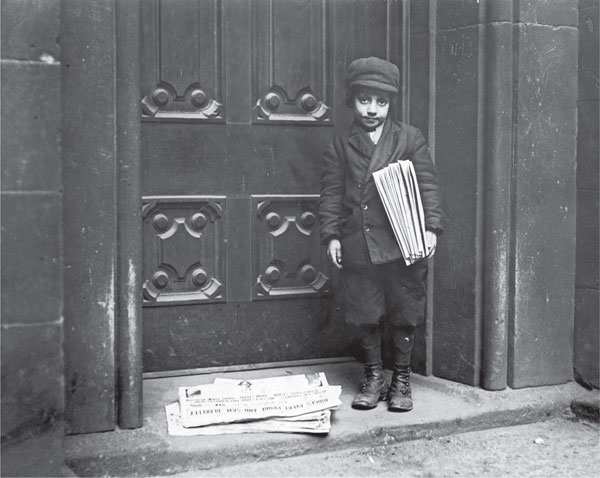
Newsboys like the one in this photo by Lewis Hine were accused by Pittsburghs police commissioner in 1915 of making up headlines to sell more papers. Courtesy Library of Congress.
I thought I was making a joke, but it turns out the story was more true than I knew. Looking through microfilm from the Pittsburgh Gazette Times published in 1915, I found a story about a minor scandal roiling Pittsburgh: Newsboys and Young Men Masquerading as Newsboys Will Have to Stop Faking in Order to Sell Their Papers, the newspaper reported on January 3, 1915. Police Superintendent W. Noble Matthews issued the warning in response to reports that cases of newsboys crying up their wares with false statements are increasing. Serious crime in Pittsburgh really must have slowed down that winter.
The superintendent yesterday ordered the police to investigate the exaggerated and false claims of the newsies, evidently designed to mislead the public into buying papers, the story said. Supt. Matthews said he believed many of the exaggerations were made by other than regular newsboys who went into residential districts to sell their papers, the Gazette Times reported. He said the news contained in the papers sold by the boys must justify the selling points which they cry or the police are authorized to take them in hand.
Matthews claimed some success in his honesty-in-news campaign. The superintendent had a few of the offenders on the carpet recently, and these promised to reform their methods, the story concluded.
Next page

